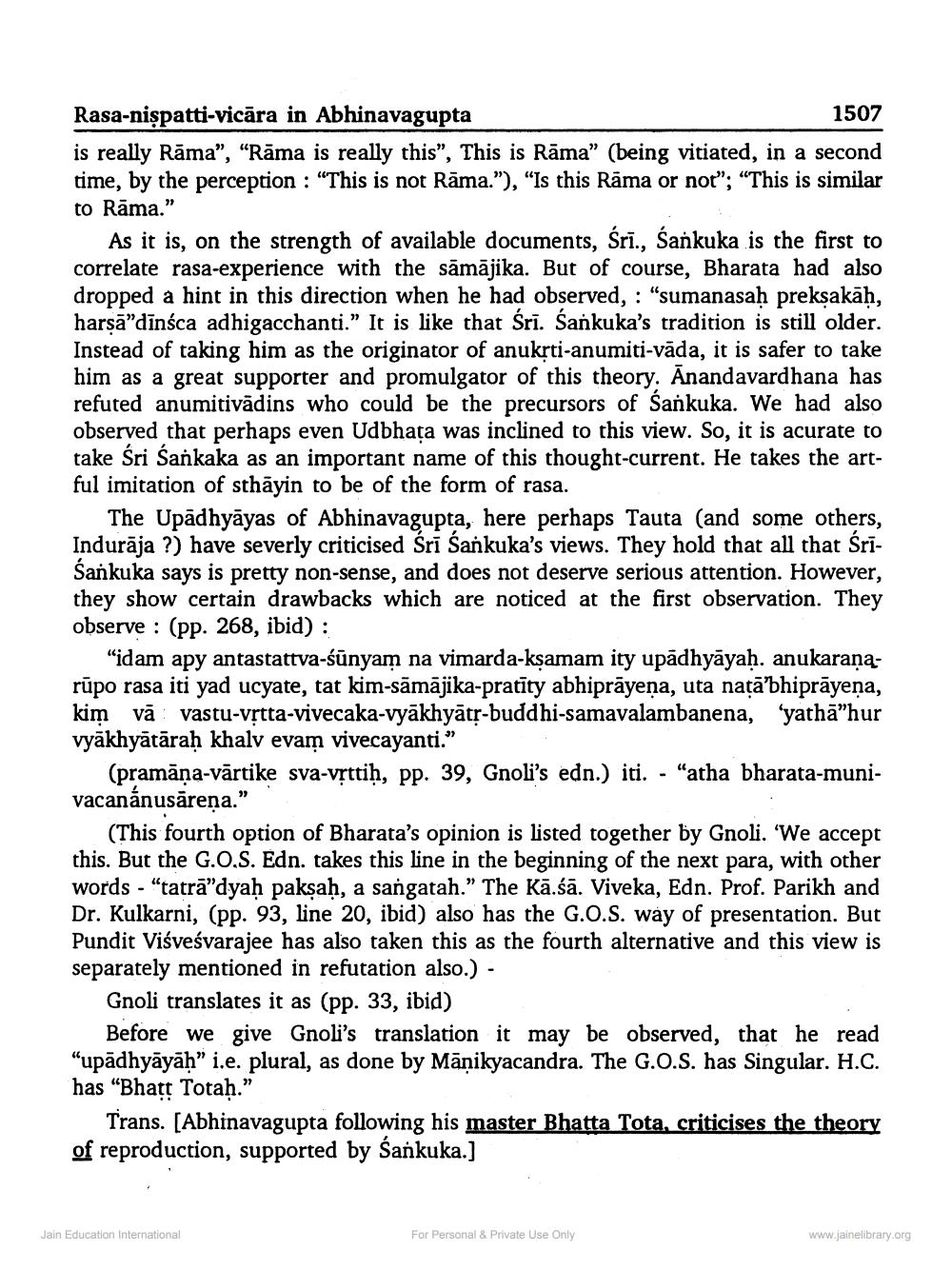________________
A
.
A
Rasa-nispatti-vicāra in Abhinavagupta
1507 is really Rāma”, “Rāma is really this”, This is Rāma” (being vitiated, in a second time, by the perception : "This is not Rāma."), "Is this Rāma or nor”; “This is similar to Rāma." As it is, on the strength of available docume
Sankuka is the first to correlate rasa-experience with the sāmājika. But of course, Bharata had also dropped a hint in this direction when he had observed, : "sumanasah preksakāh, harsā"dīnsca adhigacchanti.” It is like that Sri. Sankuka's tradition is still older. Instead of taking him as the originator of anuksti-anumiti-vāda, it is safer to take him as a great supporter and promulgator of this theory. Anandavardhana has refuted anumitivădins who could be the precursors of Sankuka. We had also observed that perhaps even Udbhata was inclined to this view. So, it is acurate to take Sri Sankaka as an important name of this thought-current. He takes the artful imitation of sthāyin to be of the form of rasa.
The Upādhyāyas of Abhinavagupta, here perhaps Tauta (and some others, Indurāja ?) have severly criticised Sri Sankuka's views. They hold that all that SriSankuka says is pretty non-sense, and does not deserve serious attention. However, they show certain drawbacks which are noticed at the first observation. They observe : (pp. 268, ibid) :
"idam apy antastattva-śünyam na vimarda-ksamam ity upadhyāyah. anukaraną. rūpo rasa iti yad ucyate, tat kim-sāmājika-pratīty abhiprāyena, uta naţā’bhiprāyena, kim vā vastu-vrtta-vivecaka-vyākhyātr-buddhi-samavalambanena, "yathā”hur vyākhyātāraḥ khalv evam vivecayanti."
(pramāņa-vārtike sva-vrttiḥ, pp. 39, Gnoli's edn.) iti. - "atha bharata-munivacanánusāreņa.”
(This fourth option of Bharata's opinion is listed together by Gnoli. 'We accept this. But the G.O.S. Edn. takes this line in the beginning of the next para, with other words - "tatrā"dyah paksah, a sangatah.” The Kā.śā. Viveka, Edn. Prof. Parikh and Dr. Kulkarni, (pp. 93, line 20, ibid) also has the G.O.S. way of presentation. But Pundit Viśveśvarajee has also taken this as the fourth alternative and this view is separately mentioned in refutation also.) -
Gnoli translates it as (pp. 33, ibid)
Before we give Gnoli's translation it may be observed, that he read "upādhyāyāh" i.e. plural, as done by Manikyacandra. The G.O.S. has Singular. H.C. has “Bhart Totaḥ."
Trans. (Abhinavagupta following his master Bhatta Tota, criticises the theory of reproduction, supported by Sankuka.]
Jain Education International
For Personal & Private Use Only
www.jainelibrary.org




